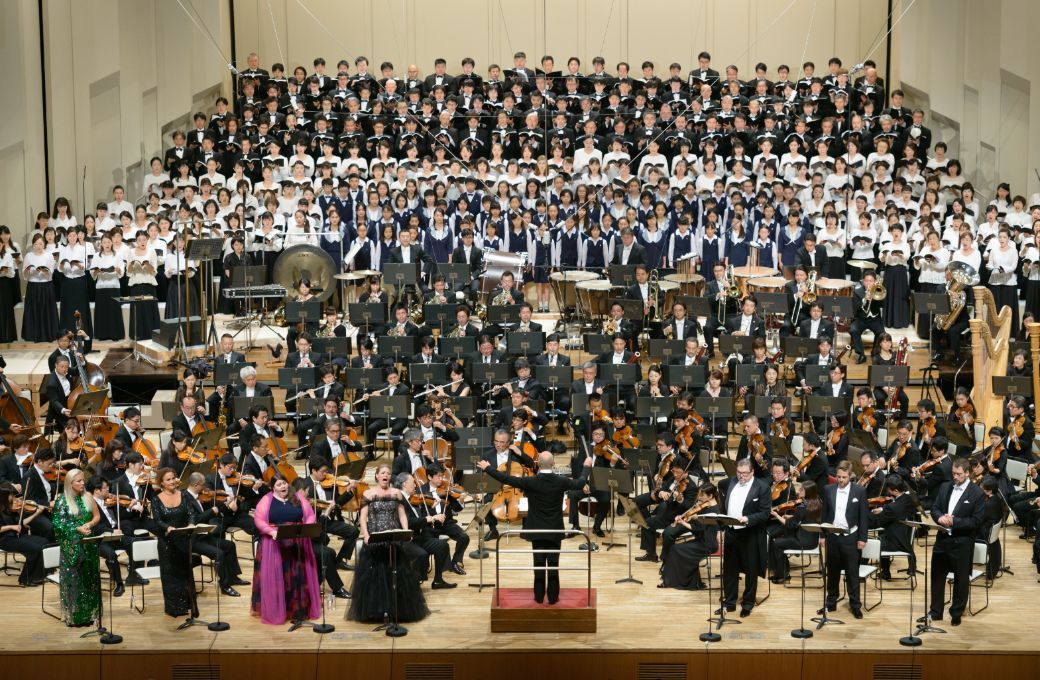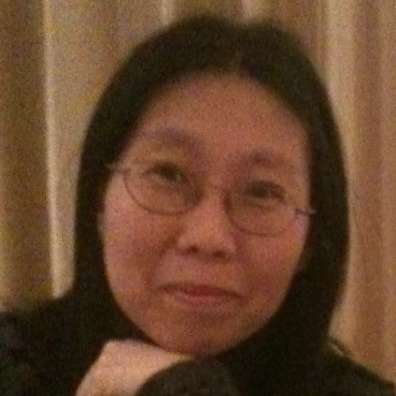Orchestras often celebrate significant anniversaries – such as 75th anniversaries or centenaries – but in December, the NHK Symphony Orchestra, Tokyo, will be celebrating a remarkable milestone of its “2000th subscription concert” with performances of Gustav Mahler’s mighty Symphony no. 8, conducted by Chief Conductor Fabio Luisi.
Today, people may no longer be familiar with the term “subscription concert”, as orchestras in many countries have abolished booking by annual subscription series (“abonnement” in Germany and France), but most Japanese orchestras maintain this system and currently the NHKSO runs three subscription series (A,B,C) annually, with two performances of each programme.
So when was the NHK Symphony’s first subscription concert, you may ask. Well, it was held on 20th February, 1927, a year after the orchestra was founded in 1926 under the name the New Symphony Orchestra (Shin kokyo gakudan). Conducted by the pioneering Japanese conductor Hidemaro Konoye (1898–1973), the programme consisted of Mendelssohn’s Hebrides Overture, ballet music from Mozart’s Idomeneo, and Schubert’s “Unfinished” Symphony. Ever since, the orchestra has kept meticulous count of all the subscription concerts it has given, despite the disruptions by war, natural disasters, or the recent pandemic. A perusal of their records reveal that for their 1000th subscription concert, held in October 1986, Wolfgang Sawallisch conducted performances of Mendelssohn’s Elijah.
In an interesting and democratic move, the NHKSO decided that it would hold a public poll to choose the work for this celebration of the 2000th subscription concert. “We wanted to celebrate this landmark together with our fans so we asked them to take part in a poll”, says Shoichi Nishikawa, Director of Artistic Planning of the NHK Symphony Orchestra. “Together with Maestro Luisi, we chose three celebratory orchestral-choral works – Mahler’s Symphony no. 8, Franz Schmidt’s Das Buch des sieben Siegeln, and Schumann’s Das Paradies und die Peri – that would be fitting for the occasion and would bring out the best of our orchestra, and asked our fans to choose. Perhaps predictably, the Mahler got the most votes but in fact the Schmidt did rather well too. We hope to incorporate the other works in our upcoming seasons.”
Mahler’s Eighth Symphony is a work that has been performed at significant junctures of the orchestra’s almost hundred-year history (the centenary is just around the corner in 2026). It was Kazuo Yamada (1912–91), the orchestra’s chief conductor between 1942 and 1951, who first performed the symphony in 1949, which also marked the Japanese premiere of the work. Since then, it has been performed by Hiroshi Wakasugi (in 1992), Charles Dutoit (in 2011), and most recently by Paavo Järvi in 2016 to celebrate the orchestra’s 90th anniversary.
“NHKSO has been the leading force in the Mahler revival in Asia, especially in the early part of the twentieth century,” explains Nishikawa. “For example, Konoye’s recording of Mahler’s Fourth Symphony in 1930 is known to be the world premiere electrical recording of the complete work. Then in 1949, it’s astonishing that Yamada was able to conduct the Eighth Symphony in the immediate post-war years when most Japanese people were struggling to make a living. It must have been a huge challenge but I think Yamada wanted to lift the spirits of the nation.”
Hidemaro Konoye conducts Mahler’s Fourth Symphony with the Tokyo New Symphony in 1930.
I ask how Fabio Luisi will approach the work. “Maestro Luisi started as the Chief Conductor of the NHKSO in the autumn of 2022, so we have just entered our second season. In the last few months, he and the orchestra have increasingly gelled and they have developed a strong sense of mutual understanding and trust, so I’m sure they will reach new heights in this special concert. In any repertoire, Luisi always places great emphasis on legato and he succeeds in creating a great flow in this way. For example, in rehearsals, he often asks the musicians to play cantabile. This I think is a strong characteristic of his music-making and I’m certain this will be his fundamental approach to Mahler’s Eighth Symphony too. Also, as a distinguished opera conductor, he is great at working with singers and chorus, and he has assembled a distinguished line-up of international soloists for this occasion.”
The NHKSO has always had an international outlook, and from its early years, it has invited prominent musicians from abroad and premiered works by contemporary composers of the age, including Tcherepnin and Malipiero. In the 1930s, when communicating and travelling across continents took much longer, the orchestra invited distinguished musicians such as cellist Emanuel Feuermann, violinist Joseph Szigeti, and pianist Ignaz Friedman. After the war, luminaries such as Herbert von Karajan, Ernest Ansermet and Igor Stravinsky visited as guest conductors, and helped raise the reputation of the orchestra.
Around the same time, Wilhelm Schüchter (Principal Conductor, 1959–62) has been credited for laying the foundation of the NHKSO’s German-style sound and repertoire. Subsequent conductors, including Wolfgang Sawallisch, Otmar Suitner, Holst Stein and Herbert Blomstedt cemented this aspect of the orchestra. This direction took a change when Charles Dutoit became Chief Conductor in 1996, and subsequent conductors including Vladimir Ashkenazy and Paavo Järvi have helped to extend the orchestra’s repertoire and palette.

International touring has also been an important part of the orchestra’s activities. They embarked on their first World Tour in 1960 led by Wilhelm Schüchter and accompanied by two young Japanese conductors, Hiroyuki Iwaki and Yuzo Toyama, who both went on to occupy the post of permanent conductor. Since then, they have been on over 40 international tours in Europe, USA, and more recently in Asia, performing at prestigious halls and festivals such as the Salzburg Festival, BBC Proms, Berlin’s Philharmonie and New York’s Carnegie Hall. In early 2020, they gave a nine-city European Tour with Paavo Järvi which concluded just days before the global shut down due to the Covid-19 pandemic.
Their next European trip has just been announced, which will be a special event. “We are hugely honoured to be invited to participate in the prestigious Mahler Festival at Amsterdam’s Concertgebouw held in May 2025, as the only orchestra from Asia. It’s the most important festival concerning Mahler’s music, and to perform alongside top orchestras such as Chicago Symphony Orchestra, Berlin Philharmonic, Budapest Festival Orchestra, and the Concertgebouw Orchestra, will be a great challenge for us. We will perform Mahler’s Third and Fourth Symphonies and songs from Des Knaben Wunderhorn with maestro Luisi. We are particularly excited to collaborate with the Dutch choirs in the Third Symphony, as it will be first time for us to perform a work with chorus abroad.”
Meanwhile, at home during its subscription season (September to June), the orchestra gives six concerts per month in Tokyo: four at their home venue of NHK Hall and two at Suntory Hall, plus some additional concerts at other venues. This enables guest conductors to explore two or three different programmes on one visit, rather than just flying in for one programme.
“We consider that the generational balance of the conductors we engage is important. Along with legendary maestros such as Herbert Blomstedt and Vladimir Fedoseyev, we want to engage conductors of the younger generation which will hopefully lead to a long-term relationship, as has been with the case with Tugan Sokhiev and Gianandrea Noseda, who came early on in their careers and returns to us regularly. Also, in this global age, we realise we need to be bolder with our programming and expand our repertoire. Especially in the run up to our centenary in 2026, we want to commission new works that will become lasting repertoire among international orchestras.”
The good news is that after the pandemic and the prolonged closure of the borders, international visitors are returning to Japan, and NHKSO too is experiencing a steady increase of international audiences at their concerts. Many are booking directly through the orchestra’s website, especially from South Korea, Taiwan and the UK. The programme booklet now provides notes in English as well, and its official YouTube channel is watched internationally. Although the 2000th Subscription Concert in December is sold out, the season has many attractive programmes ahead, so do check out the NHKSO concerts if you are planning a visit to Tokyo.
The NHK Symphony with New National Theatre Chorus perform Mahler’s Eighth Symphony on 16th December 2023. See all our listings for upcoming concerts by the NHK Symphony Orchestra.
This article was sponsored by NHK Symphony Orchestra, Tokyo.


